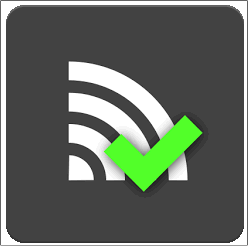Today, we have released new player apps with fixes for few issues. All of the apps mentioned here, have a fix for few FTP widget issues.
Chrome OS app v4.4.34-0-134
For now, v4.4.34 is the only supported version of the app. Also, please notice that the most stable version of Chrome OS is 62. Hence, if you use the Google Device Management Console, please make sure to restrict the Chrome OS version to 62 (otherwise it may upgrade the OS version seamlessly, without any notification or confirmation of that).
v4.4.34 fixes a list of bugs:
Ticket #1916 – Chromebox mini falls to the orange screen
Ticket #1974 – Chrome OS devices seem to reboot over and over
Ticket #1899 – Chromebit reboots when clicking the gear icon
Ticket #2015 – The app gets stuck when clicking the gear icon
Ticket #1762 – Player app is stuck in loading screen for infinity (“x/y loading”)
Ticket #1763 – When changing screen key, the “Go” button bring to a black screen
Ticket #2039 – Clear cache causes a black screen
Ticket #1872 – Constant java.lang.NullPointerException error on a Chromebit
Ticket #1801 & #1681 – Error updating content (not a JSON object)
Android app v4.4.34-0-134
In this new version, we have fixed the transition issues.
So far, in some low cost devices, such as MXQ Pro and X96, the only video-to-video transition that actually worked without problems and errors was the “Background” transition. Now, you can use the top transitions. For that, we have added a new setting, called “Video Transitions Tune” (under the “Advanced” block of settings). This new section performs fine tuning for the video transitions. Please notice that only in some cases (as when using MXQ Pro and X96 Android TV boxes), it is required to alter this setting.
For that, you need to turn on the “Manual Init Compensation”.
There are two more settings there:
* “Buffer Delay” – The buffer duration threshold (in milliseconds).
* “Buffer Count” – Minimal buffer update count threshold. The default is 1.
The “Buffer Count” doesn’t need to be changed, but the “Buffer Delay” might need to be altered: When the “Manual Init Compensation” is turned off, the default (of the “Buffer Count”) is 30ms, while when the “Manual Init Compensation” is on, the default is 300ms. Each Android player should have a different setting.
Example:
For X96 player (Android 6.0.1; firmware 13/10/2016; build 20161014 17:03), use “Performance” transition with buffer delay 220.
For X96 player (Android 6.0.1; firmware 01/08/2016; build 20170906 11:36), use “Performance” transition with buffer delay 260.
For Minix U1 (Android 5.1.1; firmware 01/12/2016; build U1 Fw011 20161201), use “Performance” transition with buffer delay 300.
For MXQ Pro 2GB (Android 5.1.1; firmware 25/03/2016; build 20160414 11:28), use “Performance” transition with buffer delay 300.
For MXQ Pro 1GB (Android 5.1.1; firmware 08/03/2016; build LMY47V.20160308 test-keys), use “Performance” transition with buffer delay 300.
For other devices, which have transition issues, it’s a trial and error: when you reduce the delay, you might see flickering or black flash between the playlist slides; while when you increase the delay, you might see the first frame of the video as a static picture for few milliseconds. The idea is to find the balance between the two, in order the transition to be smoother. Please notice that the buffer delay cannot be higher than 1,500ms.

Windows app v4.4.35-0-134
Added a fix to some FTP widget issues.
WiFi reconnect – Minix U1 and X68-i
 In some cases, such as certain combinations of firmware/hardware, which we discovered, especially with Minix Neo U1 and Minix Neo X68-i, there might be an issue when the network goes down and then comes up again. It might happen that the device doesn’t know to reconnect itself to the network/internet.
In some cases, such as certain combinations of firmware/hardware, which we discovered, especially with Minix Neo U1 and Minix Neo X68-i, there might be an issue when the network goes down and then comes up again. It might happen that the device doesn’t know to reconnect itself to the network/internet.
For devices which use WiFi, we found and tested this solution: installing an app called “WiFi Reconnect” (here is the link: https://play.google.com/store/apps/details?id=jp.programminglife.wifireconnect&hl=en). This app will try to turn on the WiFi, whenever there is no WiFi, till success.
For devices which use Ethernet cable, we haven’t found a solution (even though we are sure there is one). If the “WiFi Reconnect” app cannot be found in your country’s Google Play store, you can try using this alternate app: “WiFi Auto Connect“.